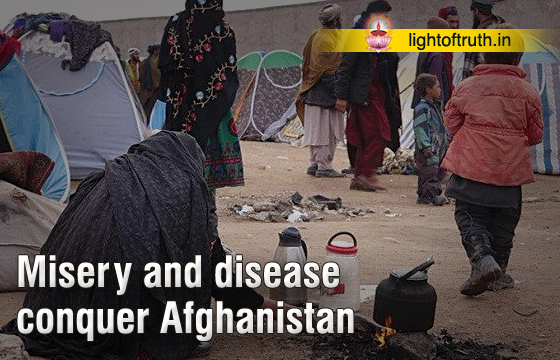Azadi ka Amrit Mahotsav Kolkata event honours four Clergymen
Pope Francis asks businesses to support working women: They’re ‘afraid to get pregnant’
Study: Christianity may lose majority, plurality status in U.S. by 2070
Indian politician declines Magsaysay Award under party pressure
Like John Paul II, Pope Francis heads to Kazakhstan during time of war

The heaving wards of a ramshackle clinic in southern Afghanistan are just one sign of the catastrophic humanitarian crisis that has gripped the war-ravaged country since the Taliban returned to power a year ago.
Last month, the Musa Qala District Hospital in Helmand province was forced to shut its doors to all except those suffering from suspected cholera.
The infirmary was soon jammed with listless patients, intravenous drips needled into their wrists as they recuperated on rusting gurneys.
Though the clinic lacks facilities to test for cholera, about 550 patients presented themselves within days, showing symptoms of a disease caused by a lack of basic sanitation needs: clean drinking water and an adequate sewerage system.
“It’s very difficult,” hospital chief Ehsa-nullah Rodi, run ragged on just five hours of sleep a night since the influx began, told.
“We didn’t see this from last year, or another year.” The United Nations says Afghanistan’s humanitarian crisis is the world’s worst.
Poverty in the country — felt most keenly in Afghanistan’s south — has been driven to desperate new levels, exacerbated by drought and inflation since Russia’s invasion of Ukraine.
“Since the Emirate (Taliban) came into power, we can’t even find cooking oil,” said one woman, perched on a hospital cot next to her malnourished six-month-old grandson in Lashkar Gah, Helmand’s provincial capital.
“Poor people are squashed under their feet,” the 35-year-old said.
The United States froze $7 billion in central bank assets, the formal banking sector collapsed, and foreign aid representing 45 percent of GDP stopped overnight. Over the past year, would-be donors have grappled with the conundrum of funnelling fresh funding to the ailing nation, which the Taliban rebranded the “Islamic Emirate” in line with their austere theocratic beliefs.
Leave a Comment